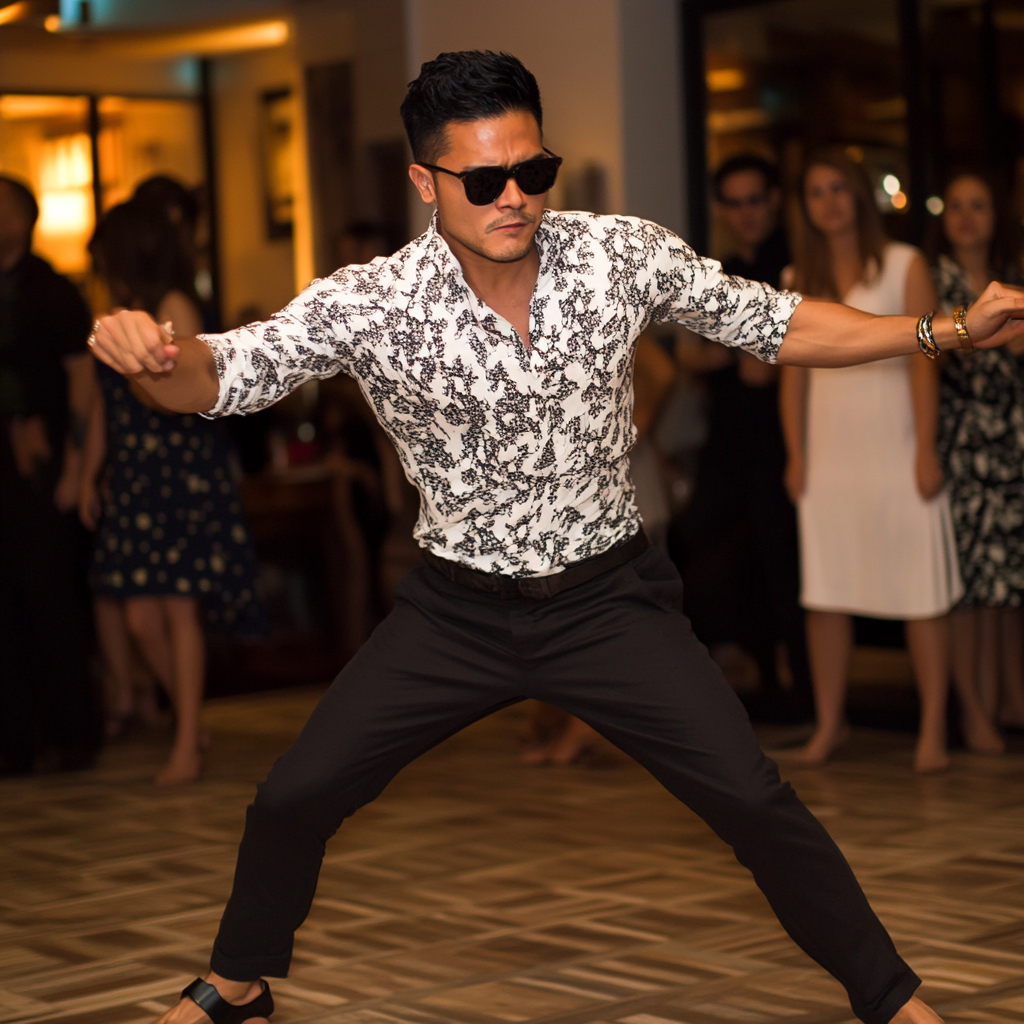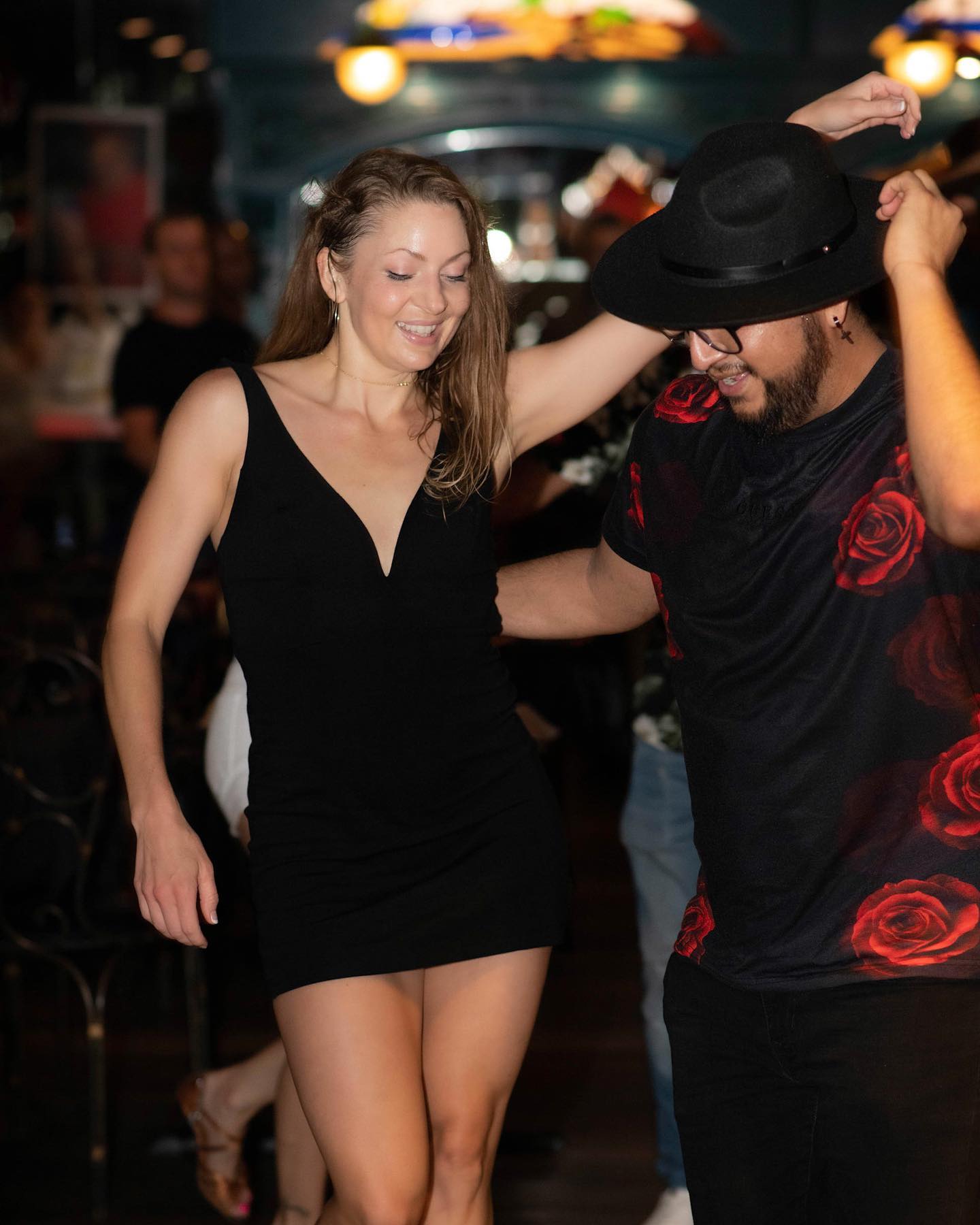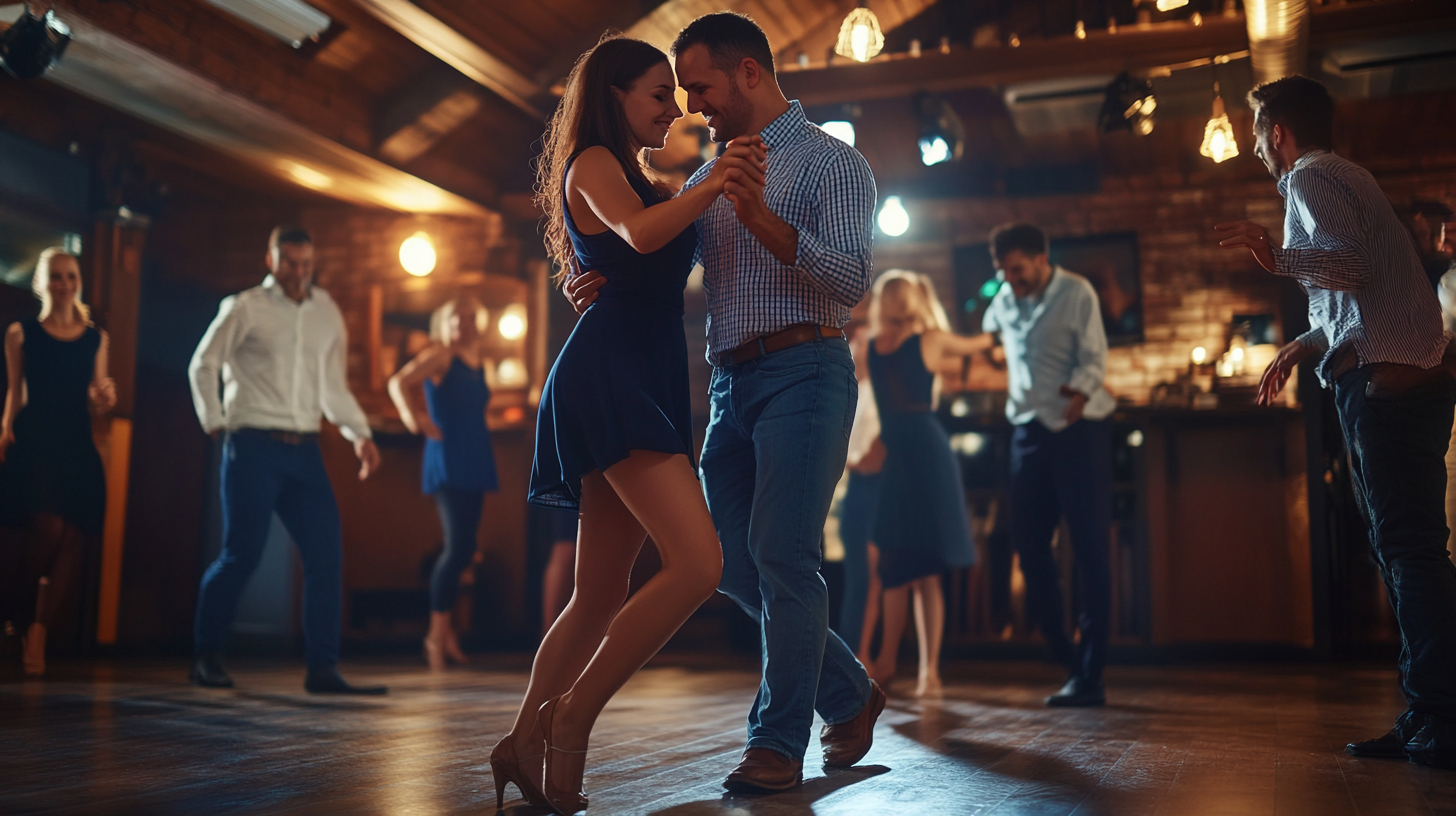Ever wondered about salsa’s journey to becoming a worldwide favorite? This lively dance, filled with fiery rhythms and dynamic moves, has captured hearts everywhere.
Salsa’s story starts with Afro-Cuban roots and Caribbean flair. Originating in Eastern Cuba in the early 1900s, it danced its way to Havana’s streets and beyond within 50 years. By the 1920s, it had enchanted people far from its Cuban home.
But salsa’s rise didn’t stop there. In the 1970s, the United States caught the salsa fever. Latin American immigrants brought their music and dance, making salsa a hit in cities with large Hispanic populations. New York, Los Angeles, and Miami became salsa hotspots.
Salsa is more than a dance. It’s a symbol of cultural pride and resilience. It tells the tale of migration, resilience, and happiness. This reflects the spirit of those who embrace and preserve it.

Key Takeaways
- Salsa dancing originated in Eastern Cuba in the early 1900s and spread globally in 50 years.
- The 1920s saw the explosion of salsa as a cultural phenomenon beyond its Cuban roots.
- Salsa became popular in the United States during the 1970s, particularly in cities with large Hispanic populations.
- The dance form is a symbol of cultural identity and resilience, deeply connected to Latin American heritage.
- Major cities like New York, Los Angeles, and Miami remain hubs of salsa dancing and culture today.
Origins of Salsa Dance
Salsa dance finds its roots in the Caribbean. Here, the cultures of the Indigenous Taino, Spanish, and Africans mixed together. This blend of traditions helped create salsa’s unique style, showing the Caribbean’s crucial role in its birth.
The Caribbean Melting Pot
Salsa comes from the Caribbean’s skill in merging different cultures. Indigenous Taino beats joined with Spanish guitar sounds, and African drums like congas and bongos were key. This mix shows the rich cultural heritage of Caribbean dance. Afro-Cuban dance styles, with their rhythms and moves, also shaped salsa. This made salsa different from other dances.
Influences from Afro-Cuban Traditions
Afro-Cuban elements were crucial in forming salsa. Drums such as the conga and bongo form salsa’s beat. The dance’s lively steps and complex footwork come from Afro-Cuban dance. Rumba, Son, and Mambo blended into salsa, making a thrilling dance.
The Birth of Salsa in 1920s Cuba
Cuba, in the 1920s, was where salsa started. Music styles like Son Montuno, Mambo, and Cha Cha Cha merged into salsa dance. Havana and other Cuban cities saw these styles grow. Salsa, first known as ‘Son’, moved from rural Cuba to Havana. There, it became hugely popular, highlighting Cuba’s importance in salsa’s history.

Early Salsa Evolution
New York’s salsa scene in the 1940s was a vibrant mix of Latin rhythms and dances. The Palladium Ballroom was crucial in salsa’s journey from street dance to global phenomenon. This iconic spot brought together different styles, sparking the evolution of Latin dance.

Development through the 1940s in New York City
In the 1940s, New York City saw salsa styles emerge, especially within Latin communities. Dance halls and clubs turned into places where new dance forms were created. They mixed Cha cha cha, Rhumba, Mambo, Cumbia, and Festejo. This blend of Caribbean music and dance not only influenced local culture but also salsa’s global fame.
The Palladium Ballroom and Its Legacy
The Palladium Ballroom was central to New York’s salsa history. Opening in the 1940s and closing in 1966, it played a key role in making mambo and salsa popular. The venue was known for its lively mambo contests and acts, featuring stars like Tito Puente and Tito Rodriguez. Johnny Pacheco, the man behind Fania Records, helped spread the salsa name, showcasing top Cuban and Puerto Rican artists. The Palladium’s impact lasted as these performances helped shape salsa into an internationally loved dance.
The Role of Music in Salsa
Salsa music makes you need to dance with its lively beats. It’s famous for its mix of instruments, legendary musicians, and unique rhythms. Let’s explore the main instruments and musicians who made salsa what it is today.
Core Instruments in Salsa Music
The beat of salsa comes from instruments like congas, timbales, and bongos. The bass, piano, and other percussion items also play a big part. With trumpets and trombones, the music gets its melody and harmony. This mix makes a sound that’s easy to recognize. The beats per minute range from 160 to 220, perfect for dancing.

Key Figures in Salsa Music History
Important musicians helped shape salsa. Johnny Pacheco made salsa worldwide known with Fania Records. Celia Cruz touched hearts with her voice, and Tito Puente was known for his amazing drumming. They helped spread salsa across the globe. The Fania All-Stars’ concert at Yankee Stadium in 1971 was a big moment for salsa. The “Sunday Salsa Show” by Roger Dawson reached over 250,000 listeners each week.
Salsa Dance Styles
Salsa dance styles bring to life a rich cultural mix and dynamic moves. Each style has its own unique touch, shaped by its origins and cultural backdrop. By understanding these styles, we can better appreciate salsa’s worldwide influence and choose which style to learn or watch.
Cuban Casino Style
The Cuban Casino style, also called Salsa Cubana, moves in a flowing circle. It connects dancers with its Afro-Cuban roots, marking salsa’s evolution. In the 1950s, Rueda de Casino was born, featuring couples dancing in a circle with moves called out by a leader.
Los Angeles Style
LA Salsa, or the Los Angeles style, starts on the music’s first beat, Salsa On 1. It mixes in acrobatic and showy elements, thanks to Hollywood. By the late 20th century, it became a leading salsa style taught worldwide.
New York Style
New York Salsa focuses on the second beat for a rhythmic vibe, known as Salsa On 2. It fuses Puerto Rican swing and mambo, echoing New York’s Latin heartbeat. The Palladium Ballroom, before closing in 1966, was a key place for salsa. Born in the 1940s, New York Salsa grew from the area’s Afro-Cuban culture.
Colombian Style
Colombian Salsa, or Salsa Caleña, is known for fast footwork and acrobatics. Cali, with over 200 salsa schools, is a worldwide salsa hub. The Feria de Cali festival draws dancers every year, showing off Salsa Caleña’s spirit. This style is a favorite in Colombia’s nightclubs and ballrooms, symbolizing the nation’s love for dance.
History of Salsa
The *evolution of salsa* blends Indigenous, Spanish, and African roots. This dance evolved over centuries in the Caribbean. Europeans arrived in 1492, leading to the tragic loss of 56 million Native Americans. Enslaved Africans, over 12 million, also shaped salsa’s rhythms.
In the early 1900s, Cuba was a top sugar producer, using enslaved labor until 1886. This era saw the creation of ‘Son’, which is essential to salsa, in rural Cuba, later spreading to Havana. Cuban salsa is marked by its circular dance steps and Rumba and Cha cha cha beats. Also, Rueda de Casino started, showing salsa’s group dance style.
The 1920s brought Cuban and Puerto Rican migrants to New York, fleeing hardships. By the 1940s, Puerto Ricans were nearly half of New York’s Latinos, adding to the city’s *salsa dance history*. Salsa thrived in this diverse city.
Salsa music and dance kept changing, with New York and Los Angeles creating unique styles. At the Palladium Ballroom, Latin dances gained fame thanks to artists like Machito and Tito Puente. Salsa is danced fast, usually between 160 and 220 bpm.
Salsa has fans all over, from Ghana to the Netherlands. In Colombia, Cali is known as the “Capital de la Salsa” because of its many salsa schools and events.
Scholars study salsa’s link to Latino identity, seeing it as a symbol of culture and emotions. The *evolution of salsa* tells a story of change and importance, showing its lasting impact and *cultural significance*.
Etymology of Salsa
The story of the salsa name is as colorful and varied as the dance. “Salsa” means ‘sauce’ in Spanish, reflecting the mix of styles and cultures in the dance. From Afro-Caribbean roots to jazz rhythms, this mix started gaining fans in the 1960s and ’70s. This is how salsa dance became known today.
The Meaning Behind the Name
The salsa name comes from the music and dance worlds of Cuba, Puerto Rico, and New York City. By the 1930s, African tunes and beats had left a mark in Cuba, providing a base for salsa. With the influence of French tunes from Haitian exiles, the salsa’s predecessor, danzón, became even richer. The genre name “salsa” only appeared in the late ’60s and early ’70s. This was when the industry wanted a catchy name for Cuban music styles like mambo and cha cha chá. Salsa was the chosen term, thanks to promoters and artists looking for a broad, appealing label.
The Marketing Influence
Izzy Sanabria was key in branding Cuban music as “salsa” for more appeal and sales. This push made the music and dance more well-known and celebrated globally. Famous New York venues like the Palladium Ballroom helped make salsa a big deal. Legends like Tito Puente played there, making salsa even more popular. Thanks to media, the salsa movement reached fans all over the world.
| Aspect | Data |
|---|---|
| Tempo | Typically ranges from 150 bpm to 250 bpm; most dancing occurs between 160 and 220 bpm |
| Dance Rhythm | Three steps for every four beats of music |
| Popular Locations | Cali, Colombia, known as the “Capital de la Salsa”; highest number of salsa schools and teams worldwide |
| Main Events | World Salsa Cali Festival and Encuentro de Melomanos y Coleccionistas in Cali, Colombia |
Salsa’s Global Spread
Salsa’s worldwide influence is clear. It has crossed borders and cultural lines, turning into a global sensation. Starting in the mid-20th century, salsa brought together son, mambo, cha-cha-cha, and other Afro-Cuban dances. This mix created a movement rich with rhythm.
In New York and Cuba, salsa quickly grew popular in dance studios, clubs, and at festivals all over. Salsa comes in many styles, like the Cuban Style that moves in circles, and others like Los Angeles and New York Styles. This variety shows how salsa adapts and appeals to many.
Cali, Colombia, is called the “Capital of Salsa.” It hosts many salsa festivals that attract people from all over, making salsa’s global presence stronger. Salsa also thrives outside Latin America, in places like Ghana, London, Switzerland, and the Netherlands. This shows how widespread international salsa dancing is.
Salsa congresses and big festivals have played a big role in spreading salsa globally. These events let top dancers show off their talents. They also help people from different cultures share and learn from each other.
| Style | Characteristics | Regions |
|---|---|---|
| Cuban Style (Casino) | Circular motion, “Rueda de Casino” | Cuba, global salsa communities |
| Los Angeles Style (“On 1”) | Dramatic spins and dips, breaking on the first beat | United States |
| New York Style (“On 2”) | Intricate footwork, musicality, dancing on the second beat | United States |
| Colombian Style (Cali Style) | Rapid footwork, quick tempo | Cali, Colombia |
The internet and digital media have made salsa even more popular. Dancers everywhere can join online classes and get connected with salsa lovers globally. This keeps the dance lively and widespread.
To sum up, salsa’s global impact is seen in how many people and places have embraced it. Its rich history, versatility, and ongoing evolution show why it’s so loved and important.
Conclusion
Salsa dancing is a key part of cultural heritage. It shows the mix of different arts and traditions. Starting in Cuba, it blends Spanish, African, and local cultures. This mix highlights the strength of cultural fusion.
In the 1940s and 1950s, mambo added Cuban Son and jazz to New York’s lively music scene. This laid the groundwork for salsa’s worldwide popularity. The 1960s and 1970s saw stars like Celia Cruz and the Fania All-Stars make salsa famous worldwide. This time was important as salsa’s influence spread across the globe.
Salsa’s reach goes beyond just dancing. It helps create a sense of identity and brings people together. With styles like Cuban and Puerto Rican salsa, it’s celebrated everywhere, from social clubs to cultural events. Salsa is known worldwide. Its legacy is kept alive by places like DanceArts Miami. They honor salsa’s history and its cultural importance. Salsa is more than dance; it’s a way to connect people, proving its strength as a cultural symbol.






